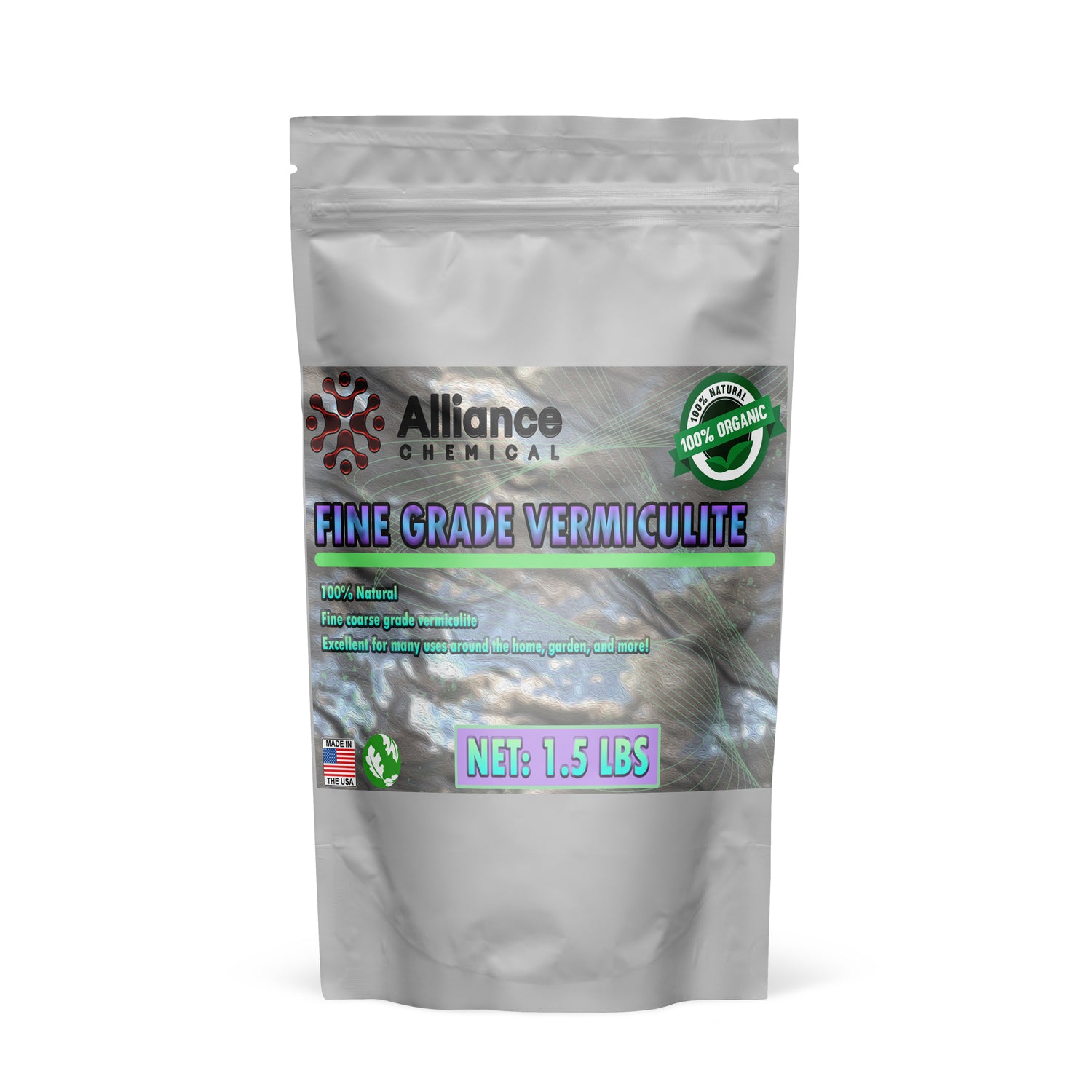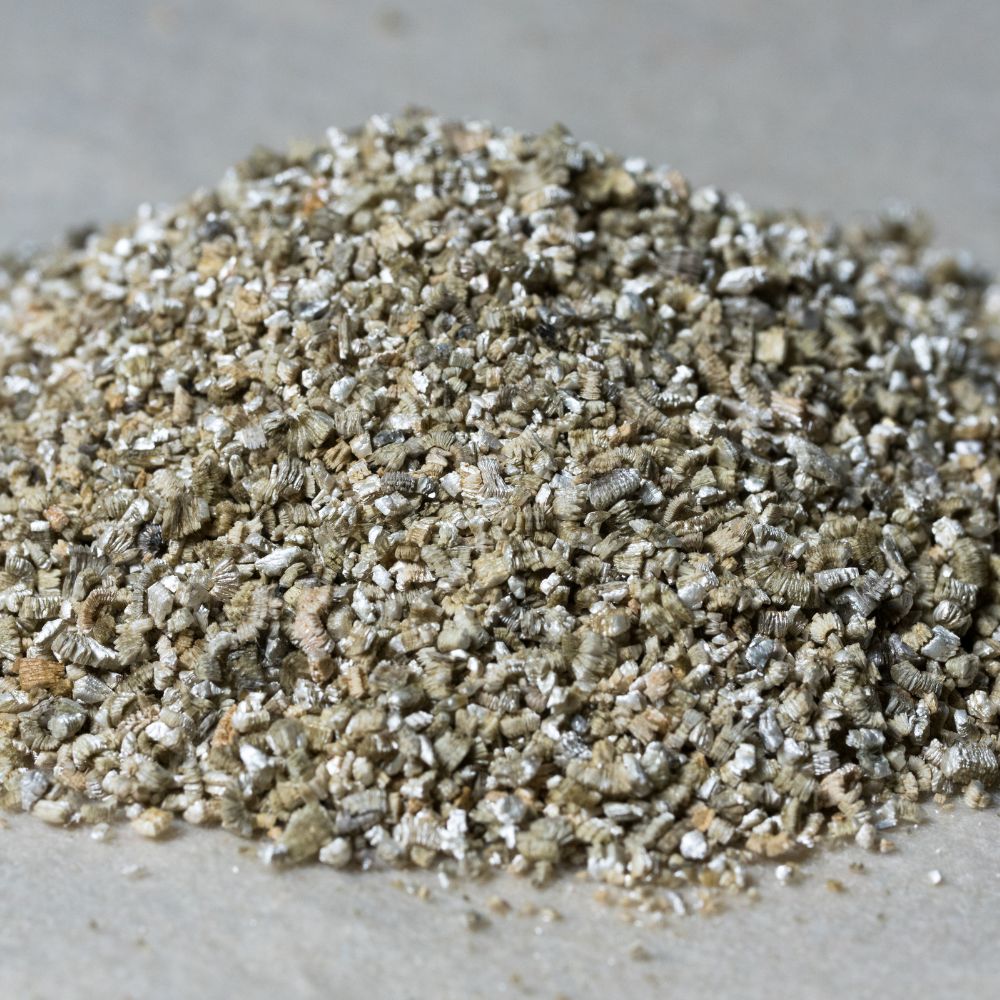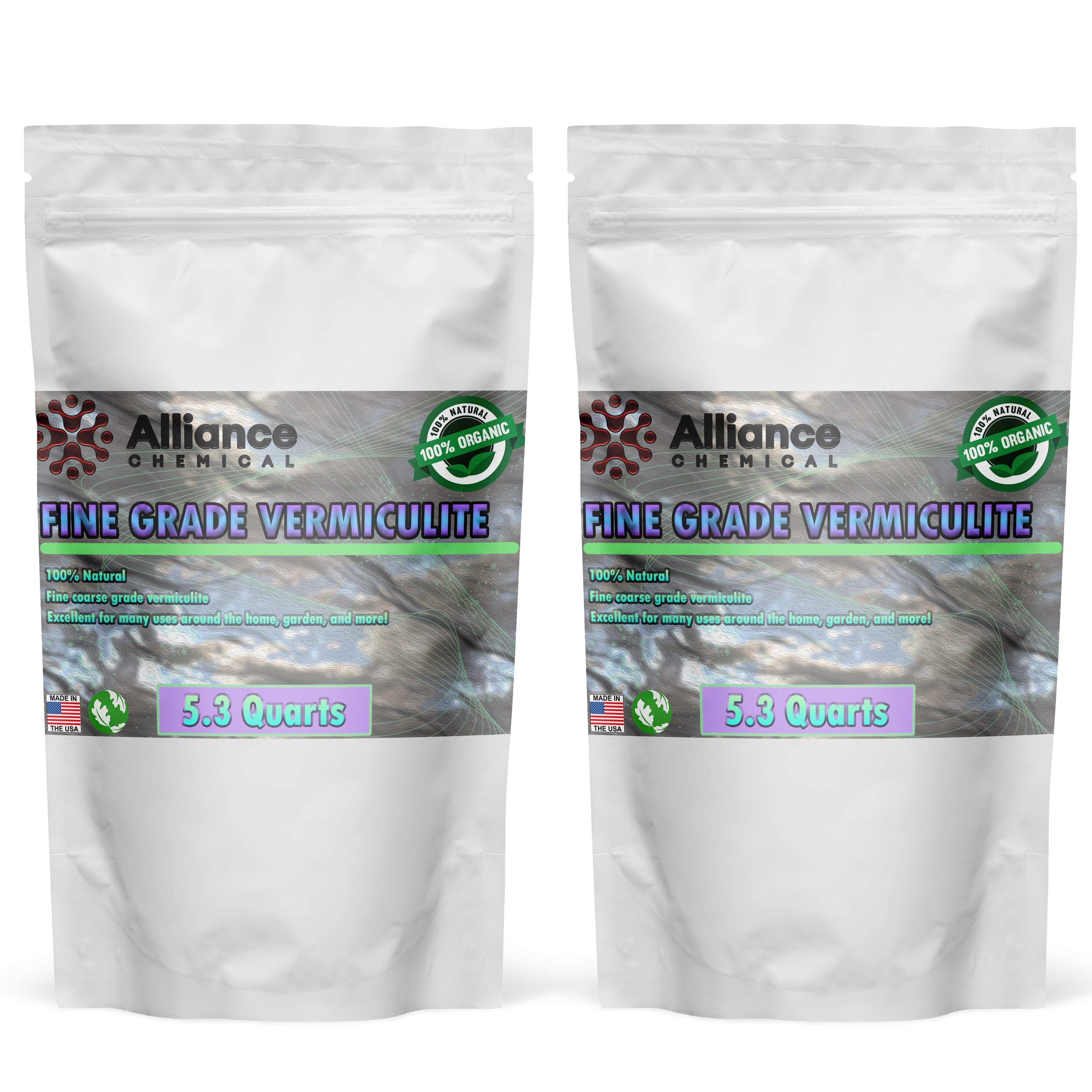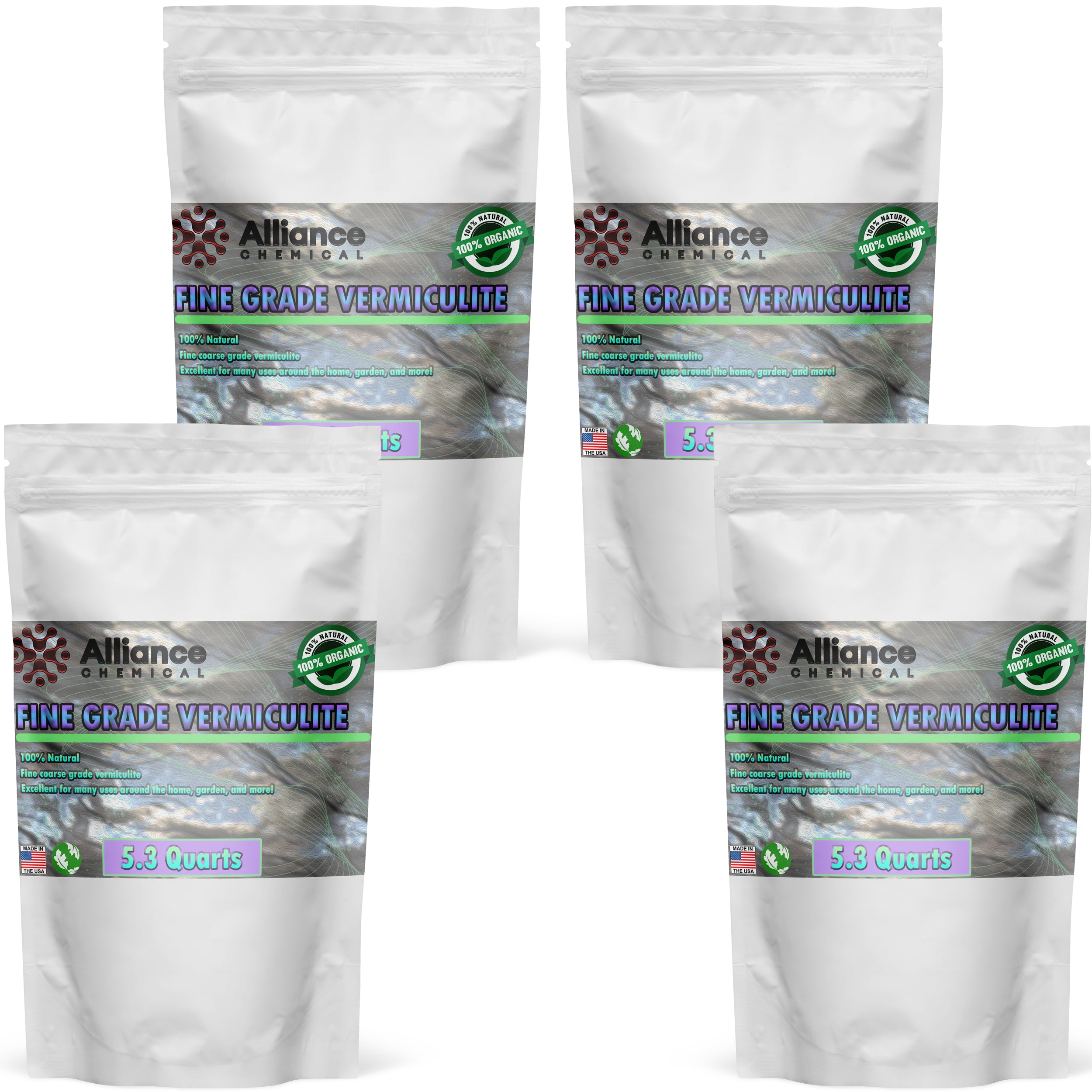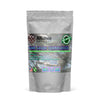Organic Vermiculite - Fine Grade
Category : Inorganic Compounds
$16.12
Unit price
Quantity
Ask a question
Product Overview
Organic Vermiculite - Fine Grade is a naturally occurring mineral that has been expanded through heating, resulting in a lightweight, porous material. It is characterized by its excellent thermal insulation properties and low density, with a typical specific gravity around 1.0 and a density range of 0.1–0.3 g/mL. The material appears as light brown to golden flakes and is odorless, making it suitable for a variety of industrial applications where fire resistance, acoustic insulation, and moisture management are required. The product complies with ASTM D 698 for lightweight aggregates and is tested via gravimetric analysis, acid digestion followed by ICP-OES, ensuring a robust elemental profile for quality assurance and reproducibility in production processes.
Expanded vermiculite is used as a soil amendment, insulation filler, lightweight aggregate in concrete, and a fireproofing component in manufacturing. Its neutral pH and low dust generation when handled with proper controls support safe incorporation into agricultural substrates, construction mixes, and packaging formulations. The COA provides a comprehensive chemical fingerprint, including trace metals, anions, and ignition residues, enabling customers to verify compliance with organic farming standards and industrial purity requirements.
Key Properties
- Assay wt % (min–max): 95–100 (typical 97.5) — Gravimetric analysis; acid digestion followed by ICP-OES
- Color (APHA/Hazen): max 12 (typical 8) — APHA/Hazen visual comparison
- Specific Gravity (20°C): min 0.9, max 1.2 (typical 1) — Pycnometer or density bottle at 20°C
- Residue After Ignition: max 3% (typical 1.5%) — Gravimetric residue after ignition at 550°C
- Chloride (Cl): max 50 ppm (typical 20) — Ion Chromatography (IC) or argentometric titration
- Nitrate (NO₃⁻): max 100 ppm (typical 40) — Ion Chromatography (IC)
- Ammonium (NH₄⁺): max 50 ppm (typical 20) — Ion Chromatography (IC)
- Sulfate (SO₄²⁻): max 200 ppm (typical 80) — Ion Chromatography (IC)
- Phosphate (PO₄³⁻): max 100 ppm (typical 40) — Ion Chromatography (IC)
- Arsenic (As): max 1 ppm (typical 0.2) — ICP-MS
- Heavy Metals (as Pb): max 5 ppm (typical 1) — ICP-MS
- Iron (Fe): max 200 ppm (typical 50) — ICP-OES
- Copper (Cu): max 100 ppm (typical 20) — ICP-OES
- Manganese (Mn): max 500 ppm (typical 100) — ICP-OES
- Nickel (Ni): max 50 ppm (typical 10) — ICP-OES
- Lead (Pb): max 20 ppm (typical 5) — ICP-OES
- Zinc (Zn): max 200 ppm (typical 50) — ICP-OES
- Aluminum (Al): max 1000 ppm (typical 200) — ICP-OES
- Chromium (Cr): max 100 ppm (typical 20) — ICP-OES
- Cobalt (Co): max 20 ppm (typical 5) — ICP-OES
- Calcium (Ca): max 200,000 ppm (typical 50,000) — ICP-OES
- Magnesium (Mg): max 100,000 ppm (typical 25,000) — ICP-OES
- Potassium (K): max 40,000 ppm (typical 8,000) — ICP-OES
- Sodium (Na): max 40,000 ppm (typical 8,000) — ICP-OES
- Reducing Substances (permanganate test): Passes test — Potassium permanganate time test
- Sulfurous Acid (H₂SO₃): max 100 ppm (typical 30) — Titrimetric/Colorimetric reduction assay
- Available Chlorine (Cl₂): 0% — Not applicable (inert material)
- Water Content: 0% — Not applicable
- Heavy Metal Notes: All heavy metal values are trace-level and reported as ppm unless noted
- Other Attributes: Substances darkened by H₂SO₄ Passes test
Common Applications
- Soil Amendment: Agriculture — Improves soil aeration and moisture retention in horticultural substrates, supports root development and nutrient retention while reducing soil compaction.
- Insulation Material: Construction — Lightweight, thermally insulating fill for walls, roofs, and flooring, contributing to energy efficiency and fire-resistance strategies.
- Lightweight Aggregate: Construction — Used as a coarse aggregate in concrete formulations to reduce density and improve workability in precast and cast-in-place structures.
- Fireproofing Material: Manufacturing — Integrated into fireproofing composites due to inherent thermal stability and low combustibility characteristics.
- Packaging Material: Shipping — Cushions fragile goods with excellent dimensional stability and low dust generation in transit and handling.
Safety Precautions
Handle with standard industrial hygiene practices. Store in a cool, dry place away from moisture and incompatible materials (strong acids and bases). Use appropriate PPE, including gloves and dust masks or respirators when handling to minimize inhalation exposure to dust, and ensure adequate ventilation in storage and handling areas.
In the event of exposure, follow standard first aid procedures: eye exposure—rinse cautiously with water for several minutes; skin exposure—wash with soap and water; inhalation—move to fresh air and seek medical attention if symptoms persist; ingestion—rinse mouth and seek medical attention if symptoms occur. The SDS indicates a non-hazardous classification with precautionary handling to minimize dust generation and ensure workplace safety.
Benefits
✔ Excellent Thermal Insulation – Low density vermiculite provides superior insulating performance in buildings and industrial enclosures.
✔ Low Heavy Metal Content – Trace-level metals support compliance with organic farming and sensitive manufacturing processes.
✔ Stable Chemical Profile – Inert in many substrates, with a broad pH compatibility range for diverse applications.
✔ Versatile, Lightweight Aggregate – Enhances workability and reduces structural loading in concrete and composite systems.
| Property | Value |
|---|---|
| Grade | Fine |
| Form | Solid |
| Solubility | Insoluble in water |
| Appearance | Fine-grained, porous mineral material |
| Industry | Industrial, Environmental |
Compare Products
| Price |
|---|
| SKU |
| Rating |
| Discount |
| Vendor |
| Tags |
| Weight |
| Stock |
| Short Description |

